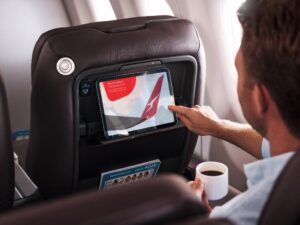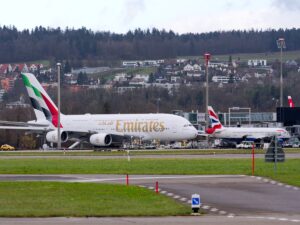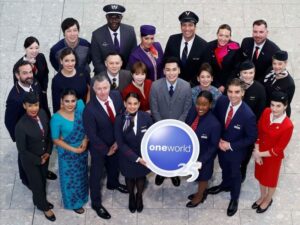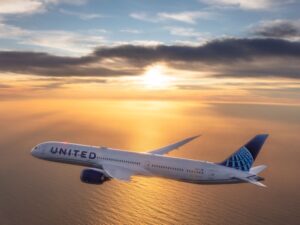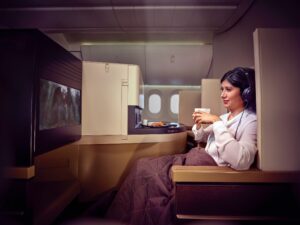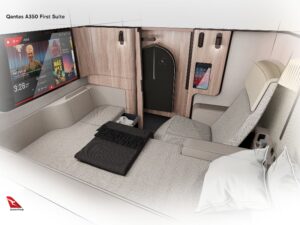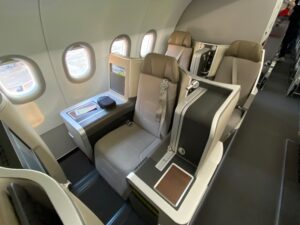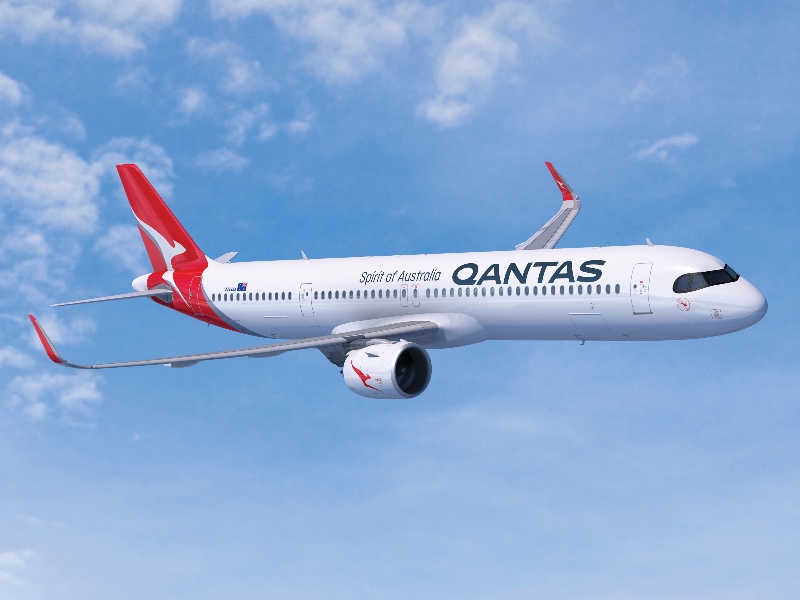
Last week, Qantas announced a huge order of brand new Airbus aircraft. The showpiece of the announcement was the new Airbus A350-1000s which will fly Qantas’ non-stop “Project Sunrise” flights from Sydney to London and New York. But Qantas also announced a large order of Airbus A321XLR and A220 aircraft which will ultimately replace the ageing Boeing 737 and 717 fleets over the coming decade.
Although it’s a narrow-body aircraft, the Airbus A321XLR (“XLR” stands for Extra Long Range) has an impressive range of 8,700km. That’s around 3,000km further than the Boeing 737-800. Qantas says that this will make it possible to deploy Airbus A321XLRs not just on domestic routes, but also on short-haul international routes to places like the Pacific Islands and Southeast Asia.
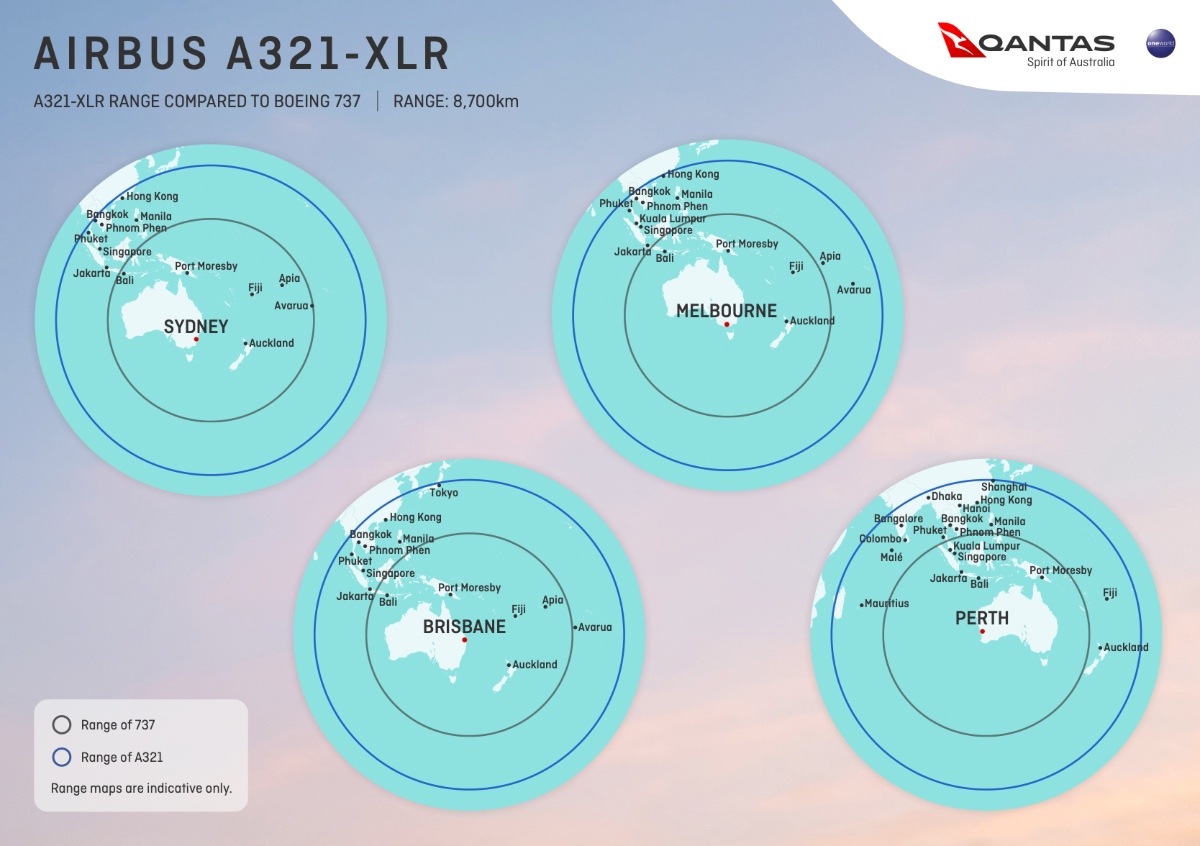
The first Airbus A321XLRs will be delivered to Qantas in late 2024. This means that in less than 3 years, Qantas could theoretically be flying narrow-body aircraft on routes like Perth-Auckland, Sydney-Rarotonga, Melbourne-Singapore or even Brisbane-Tokyo. But will these planes be configured for long-haul flights?
The Qantas Airbus A321XLR seating configuration
While we don’t yet know which exact types of seats will be installed, we do already know how the first A321XLRs arriving in late 2024 will be configured.
Qantas says that its first A321XLRs will be delivered with 20 Business and 180 Economy seats, giving a total seat count of 200 seats. (This is 26 more seats than the Boeing 737-800, which is 5 metres shorter than the A321XLR.)
Qantas has also said that there will be no reduction in space between seats, compared to the Boeing 737-800. The Economy Class seat pitch on Qantas’ Boeing 737-800 is 30 inches, while in Business each row of seats takes up 37 inches of space.
Based on the number of seats on board and the length of the cabin, it’s clear that Qantas must be planning to install five rows of reclining Business Class seats on its new A321XLR aircraft in a 2-2 configuration. Behind the Business cabin, there will be 30 rows of Economy Class seating in a standard 3-3 configuration.
It’s likely that these aircraft would offer in-flight wifi connectivity and seatback in-flight entertainment screens, as is currently the case on Qantas’ newer Boeing 737-800s.
With this configuration, these aircraft will likely be used primarily on domestic flights – and perhaps to short-haul overseas destinations like New Zealand. But this configuration would not be suitable for longer flights into Asia. It also wouldn’t really be ideal for overnight domestic flights on routes like Perth-Sydney, where Business passengers value a lie-flat bed.
A mid-haul A321XLR sub-fleet is a possibility
Even though the first tranche of Airbus A321XLR deliveries will primarily be used on domestic routes, that doesn’t mean Qantas won’t eventually use these fuel-efficient and highly capable aircraft on mid-haul international routes.
In addition to the 20 confirmed orders announced last week, the Qantas Group has purchase right options to acquire up to 94 more narrow-body Airbus jets over the next decade. So, Qantas will likely end up with many more than just 20 of these popular aircraft in its fleet.
Australian Frequent Flyer understands that Qantas is considering eventually operating a second sub-fleet of Airbus A321XLR aircraft configured for longer flights to Asian destinations such as Jakarta or Manila. These aircraft could also be used on longer domestic routes currently served by Airbus A330s, such as trans-continental flights.
This sub-fleet would have lie-flat Business seats installed in a 1-1 layout. These seats could look something like the Mint seats installed on JetBlue’s new A321LRs, which are used on the New York-London route.
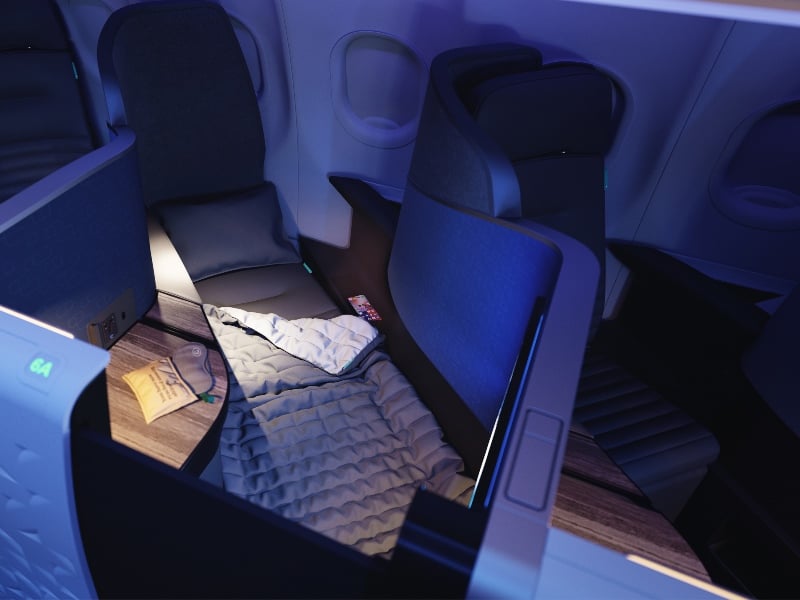
Narrow-body aircraft traditionally haven’t had lie-flat Business seats, due to being predominantly used for shorter flights. But this is becoming more common as airlines start to take advantage of the longer range offered by modern jets like the A321LR and A321XLR.
You can leave a comment or discuss this topic on the Australian Frequent Flyer forum.
